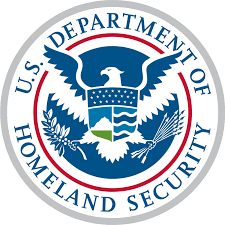
General Regulatory Approach:
In the ANPRM, DHS asks “whether or not commenters think that deletions, additions or modification to the list of exempt facilities should be considered.” 79 Fed. Reg. at 48695. When it enacted the CFATS enabling legislation, Congress was clear that CFATS regulations shall apply to chemical facilities that “present high levels of security risk.” Department of Homeland Security Appropriations Act of 2007, Pub. L. 109-295. Consistent with this statutory standard and to ensure alignment of CFATS with other regulatory programs, INGAA recommends that DHS add underground natural gas storage fields to the list of facilities exempt from CFATS. This exemption would be consistent with the U.S. Department of Transportation’s Pipeline and Hazardous Materials Safety Administration (PHMSA) decision not to regulate underground natural gas storage fields. PHMSA understands that these fields are regulated by state agencies and present relatively low risk. Similarly, it does not serve any practical utility to impose expensive and duplicative security obligations under CFATS on remotely located underground natural gas storage fields that pose minimal security consequences to the surrounding community or to the national economy. Therefore, INGAA encourages DHS to continue to work with industry and with other government regulatory bodies in the exchange and evaluation of technical information to assess the relatively low level of risk that these facilities may pose.
In addition, DHS must more clearly recognize the specific statutory exclusion for facilities regulated under the Maritime Transportation Security Act of 2002 (MTSA). Public Law 107-295. When it enacted the CFATS law, Congress recognized that MTSA facilities are already subject to a comprehensive Coast Guard security program and that additional regulations would be duplicative and not cost-effective. See, Congressman Barton’s floor statement: “America does not become more secure by piling on more laws, it just becomes more regulated . . . . Some misread [the MTSA exemption] as meaning . . . maritime facilities do not get protection. On the contrary, the exemption from terrorism we’ve already given them is so good we don’t want conflicting regulatory programs to interfere.” H7971 Cong. Rec. – House (Sept. 29, 2006). Despite this clear directive, DHS has required so-called “parsed” MTSA facilities to submit CFATS Top Screens. This practice is, however, expressly beyond DHS’s statutory authority, and DHS should clarify that it will no longer impose CFATS obligations (including the requirement to submit a Top Screen) on MTSA-regulated facilities.
Treatment of Nontraditional Chemical Facilities:
Recognizing that its current “one-size-fits-all” approach may not be optimal for the diverse group of stakeholders covered by CFATS, DHS seeks comments on the applicability of the CFATS requirements to nontraditional facilities. 79 Fed. Reg. 48695. INGAA agrees and suggests that DHS use a sector-by-sector, risk-based approach. With regard to the pipeline sector, INGAA recommends that DHS follow the successful Transportation Security Administration (TSA) pipeline security model and work collaboratively with nontraditional chemical facilities to develop risk-based, flexible and practical guidelines.
Clarification of Terminology:
DHS seeks comments on the utility, clarity and accuracy of definitions in the CFATS rule, including the definition of “material modification.” Id. at 48696. INGAA members have encountered significant and time-consuming difficulties in interpreting and complying with the requirement to notify DHS of a “material modification.” The lack of a clear definition has resulted in confusion over when and if a facility needs to file a revised Top Screen. INGAA suggests that a finding of a “material modification” should be based on a “risk-based” analysis. This approach would provide clarity to covered facilities in accordance with Congressional intent to regulate only those facilities that present a high level of security risk.
Appendix A:
DHS seeks comments on possible additions to, deletions from, or modifications to the Appendix A Chemicals of Interest (COI) list, including the significant threshold quantities (STQs). Id. Experience with the CFATS and other regulatory programs has provided information to DHS and stakeholders on the types of chemicals that pose a “high risk.” DHS should clarify and tighten Appendix A based upon this experience and information. INGAA recommends specifically that DHS undertake a robust, risk-based, scientific, and economic analysis as the basis for its review of the Appendix A. That review should include stakeholder input to help ensure that risks are considered in the context of real-world factors, including potential impacts to the nation’s economy, in addition to security, public health and safety. To this end, DHS should develop and publish for comment its research and data-gathering methodology for identifying, defining, and quantifying the threat associated with a specific chemical.
Alignment with Other Regulatory Programs:
DHS seeks comments on how it may better align CFATS and other existing chemical facility regulations, including comments on duplication or overlap. Id. The current overlap of CFATS with MTSA security plan requirements (e.g., DHS’s “parsed facility” guidance addressed above) and Personnel Surety programs (e.g., TSA’s Transportation Worker Identification Credential (TWIC) program) impose increased costs with no corresponding security benefits. A facility should be able, for example, to transfer workers from a marine facility to a CFATS facility without performing additional background checks and security requirements. The workers’ current personal security requirements such as the TWIC should be deemed sufficient.
In addition, the overlap of the CFATS Chemical terrorism Vulnerability Information (CVI) requirements with other federal programs to protect sensitive security information triggers unnecessary and duplicative marking requirements on CFATS-covered facilities. These requirements should be streamlined.







